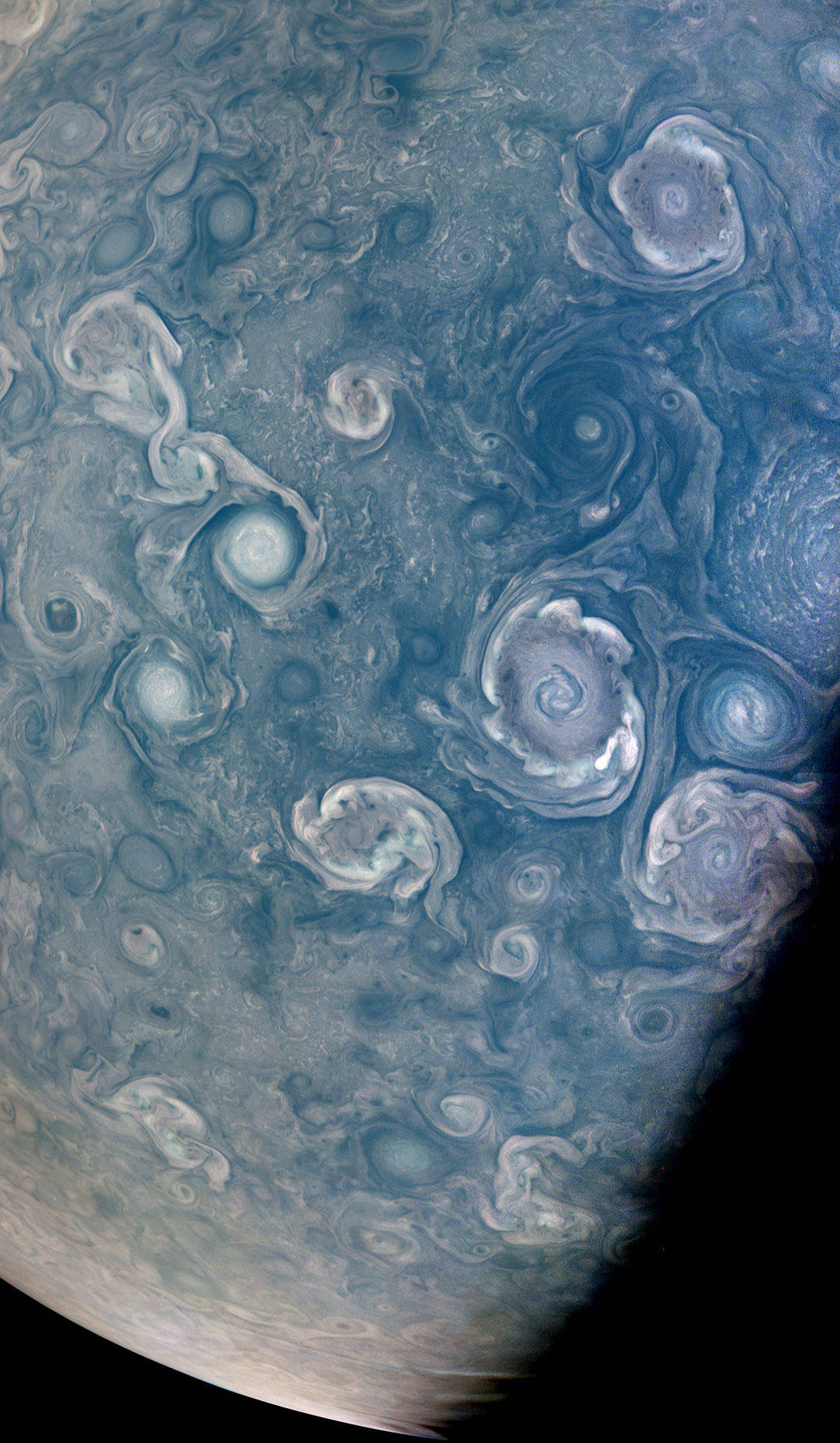As NASA’s Juno mission completed its 43rd close flyby of Jupiter on July 5, 2022, its JunoCam instrument captured this striking view of vortices — hurricane-like spiral wind patterns — near the planet’s north pole.
These powerful storms can be over 30 miles (50 kilometers) in height and hundreds of miles across. Figuring out how they form is key to understanding Jupiter’s atmosphere, as well as the fluid dynamics and cloud chemistry that create the planet’s other atmospheric features. A NASA citizen science project, Jovian Vortex Hunter, seeks help from volunteer members of the public to spot and help categorize vortices and other atmospheric phenomena visible in JunoCam photos of Jupiter. As of July 2022, 2,404 volunteers had made 376,725 classifications using the Jovian Vortex Hunter project web site at https://www.zooniverse.org/projects/ramanakumars/jovian-vortex-hunter.
Learn more
NASA’s Juno Mission Spies Vortices Near Jupiter’s North Pole
Image data: NASA/JPL-Caltech/SwRI/MSSS
Image processing by Brian Swift © CC BY
2022年7月5日,NASA的朱诺号探测器完成了第43次近距离飞越木星的任务,它的朱诺相机(JunoCam)在木星北极附近拍摄到了这张令人震撼的漩涡图——类似飓风的螺旋风模式。
这些强大的风暴高度可以超过30英里(50公里),直径可达数百英里。弄清楚它们是如何形成的是理解木星大气层的关键,也是了解创造木星其他大气特征的流体动力学和云化学的关键。NASA的一个公民科学项目“木星漩涡猎人”寻求公众志愿者的帮助,以发现并帮助分类朱诺相机木星照片中可见的漩涡和其他大气现象。截至2022年7月,2404名志愿者使用木星漩涡猎人项目网站(https://www.zooniverse.org/projects/ramanakumars/jovian-vortex-hunter)进行了376725次分类。
了解更多信息
图像数据:NASA/JPL Caltech/SwRI/MSSS
影像处理:Brian Swift © CC BY







